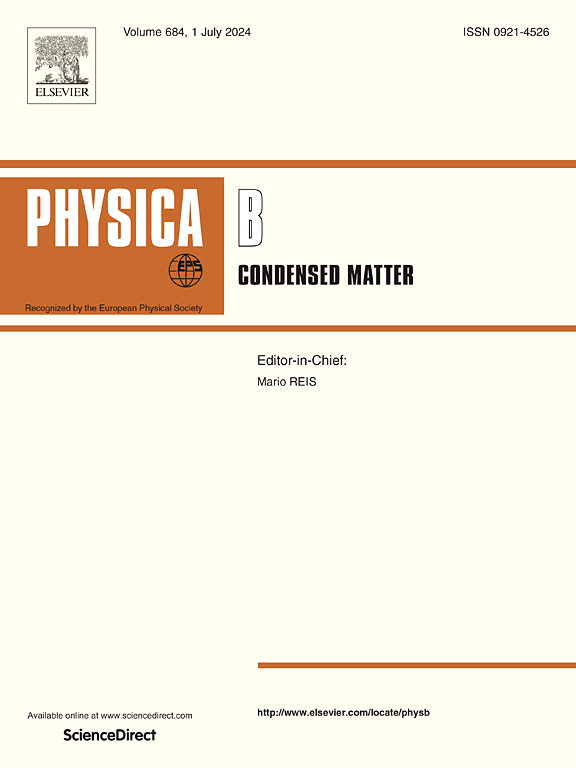自旋星系统中多个可蒸馏和束缚纠缠态的出现
IF 2.8
3区 物理与天体物理
Q2 PHYSICS, CONDENSED MATTER
引用次数: 0
摘要
在量子系统中,纠缠是一个基本特征,其中一个粒子的状态与其他粒子的状态内在地相互联系,即使在物理上彼此相距遥远的情况下也是如此。相反,蒸馏现象涉及从低纠缠态中提取高纠缠态的能力。具体来说,它需要通过利用局部运算和经典通信将量子态集合转换为具有最大纠缠的简化态集合。通过实践和理论工具,Barreiro等人在[Nature Physics, 6,943(2010)]中展示了如何将四量子位系统的量子态置于不可蒸馏的条件下。他们表明,当子系统中只有一些可想象的构型之间存在纠缠时,就会出现被称为束缚纠缠域的条件。此外,他们还证明了在系统组分的任何可能排列中存在纠缠的条件称为自由纠缠区,它也是可蒸馏的。然而,上述研究的发现与本工作的挑战之间的显著差异可以简要描述如下:Barreiro小组的研究表明其目标系统中存在单个束缚纠缠区,而本研究表明存在两个不同的束缚纠缠区。为此,提出了一个具有海森堡和Dzyaloshinskii-Moriya相互作用的自旋星系统。我们还将展示在什么条件下,在纠缠和自由纠缠域中存在可分离区域。本文章由计算机程序翻译,如有差异,请以英文原文为准。

Emergence of multiple distillable and bound entangled states in a spin-star system
In quantum systems, entanglement is a fundamental characteristic wherein the state of one particle is inherently interconnected with the states of other particles, even in cases when they are physically distant from each other. Conversely, the phenomenon of distillation pertains to the capacity to extract states with high entanglement from states with lower entanglement. Specifically, it entails the conversion of a collection of quantum states into a reduced set of states with maximal entanglement through the utilization of local operations and classical communication. Through practical and theoretical tools, Barreiro et al. in [Nature Physics, 6, 943 (2010)], showed how the quantum state of a four-qubit system is placed in non-distillable conditions. They showed that the condition which is referred to as the bound entanglement domain occurs when there is entanglement between only some conceivable configurations for subsystems. In addition, they showed that the condition in which there is entanglement in any possible arrangement of system’s components is called free entangled region, which is also distillable. Nevertheless, a significant difference between the findings of the above study and the challenge in the present work can be briefly described as follows: the study by Barreiro’s group showed the existence of a single bound entangled region in their target system, while the present study, indicates the existence of two distinct bound entangled regions. For this purpose, a spin-star system with Heisenberg and Dzyaloshinskii–Moriya interactions has been proposed. We will also show in what conditions the separable regions in terms of entanglement and the free entangled domain will exist.
求助全文
通过发布文献求助,成功后即可免费获取论文全文。
去求助
来源期刊

Physica B-condensed Matter
物理-物理:凝聚态物理
CiteScore
4.90
自引率
7.10%
发文量
703
审稿时长
44 days
期刊介绍:
Physica B: Condensed Matter comprises all condensed matter and material physics that involve theoretical, computational and experimental work.
Papers should contain further developments and a proper discussion on the physics of experimental or theoretical results in one of the following areas:
-Magnetism
-Materials physics
-Nanostructures and nanomaterials
-Optics and optical materials
-Quantum materials
-Semiconductors
-Strongly correlated systems
-Superconductivity
-Surfaces and interfaces
 求助内容:
求助内容: 应助结果提醒方式:
应助结果提醒方式:


